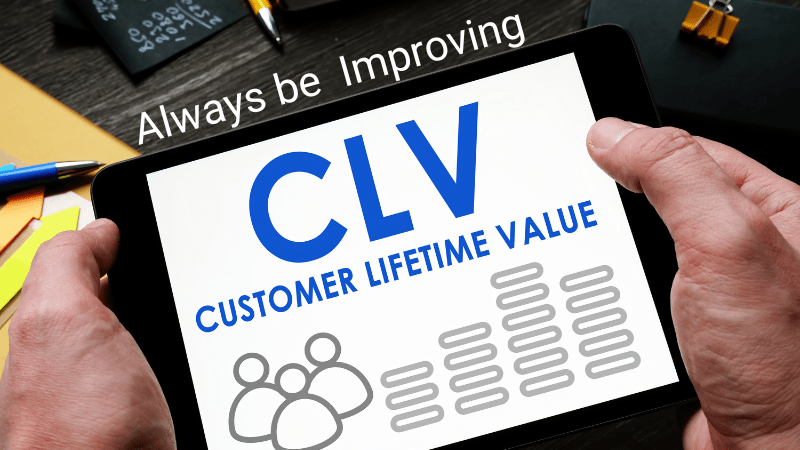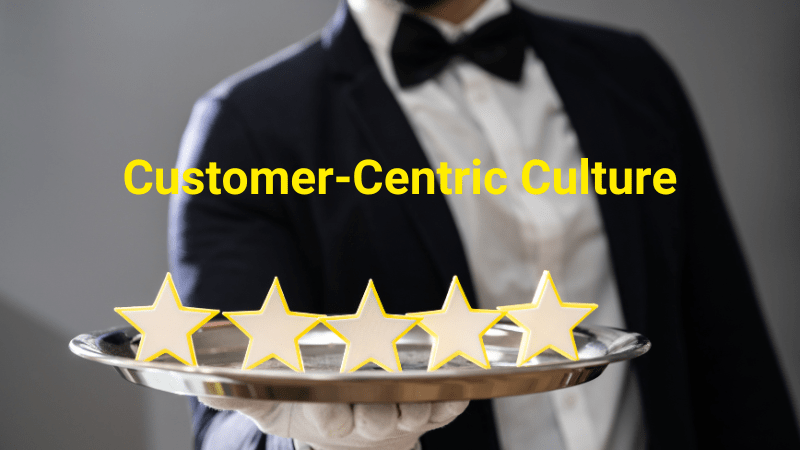Introduction
Why the most successful professional firms are throwing out the old relationship rulebook (and what they’re doing instead)
In today’s competitive market, professional service firms must focus on more than just selling services. They need to build lasting client relationships. A customer-centric culture puts clients at the heart of all decisions and actions.
This approach drives two key business metrics: Referrals and Customer Lifetime Value (CLV). Let’s explore how a client-first mindset boosts these vital indicators and how your firm can build this culture.
Key Takeaways
- Referrals are your secret weapon – Clients who feel “excellent” about their experience are 4X more likely to send you business. That’s not luck, that’s predictable revenue.
- Customer Lifetime Value is where the real money lives – A tiny 5% bump in client retention can explode your profits by 25% or more. Most firms are leaving this money on the table.
- Leadership sets the tone – If your partners aren’t obsessed with clients, your team won’t be either. It starts at the top, period.
- Hire for heart, train for skills – You can teach someone your processes, but you can’t teach them to genuinely care about client success.
- Feedback without action is worthless – Collecting client opinions means nothing if you don’t actually change based on what they tell you.
Table of Contents
Understanding a Customer-Centric Culture
A customer-centric culture means putting clients first in all business choices. It’s not just good service. It’s a complete way of thinking that shapes your firm’s identity.
This mindset affects everything from hiring to daily operations. In truly client-focused firms, every team member knows their role in creating positive client experiences.
The Link to Referrals
Word-of-mouth remains the most trusted form of marketing. For professional service firms, referrals often bring the best new clients.
When clients feel valued, they talk about it. Research shows that customers who rate their experience as “excellent” are four times more likely to refer others to your business.
These warm leads convert at higher rates than cold prospects. They also tend to trust you faster because someone they know has vouched for you.
Impact on Customer Lifetime Value

CLV measures the total worth of a client over your entire relationship. It combines revenue, retention rates, and service costs.
Firms with a customer-centric culture see higher CLV through:
- Longer client relationships
- More frequent service purchases
- Higher spending per engagement
- Lower cost to serve loyal clients
Even a small boost in retention can greatly increase profits. A 5% increase in client retention can lift profits by 25% or more in many service businesses.
Building a Customer-Centric Culture
Start with Leadership
Leaders must champion client focus in words and actions. When partners and managers put clients first, staff will follow their example.
Leaders should share stories of great client service. They should also recognise team members who go above and beyond for clients.
Client-focused metrics should influence promotions and bonuses. This shows the firm truly values customer-centricity.
Hire for Client Focus
Look for empathy and listening skills when hiring. Technical skills matter, but they’re easier to teach than genuine care for clients.
Ask candidates about times they exceeded client expectations. Their stories will reveal if they truly value client success.
Check references about how candidates handle client problems. Past behaviour predicts future performance.
Train Continuously
Regular training keeps client service skills sharp. Role-playing difficult client scenarios helps staff prepare for real challenges.
Share best practices across teams. When someone finds a better way to serve clients, everyone should learn from it.
Teach active listening skills. Many client issues stem from misunderstandings that careful listening could prevent.
Gather and Use Client Feedback
Create simple ways for clients to share their thoughts. Short surveys after projects help track satisfaction.
But don’t stop there. Call clients directly to ask for deeper feedback. These conversations often reveal insights surveys miss.
Most importantly, act on what you learn. Show clients their feedback leads to real changes.
Align Systems and Processes
Review all touch points in your client journey. Each interaction should be smooth and pleasant for the client.
Make billing clear and easy to understand. Confusing invoices can undo goodwill built through great service.
Create knowledge bases that help clients help themselves. Self-service options show respect for clients’ time.
Measuring Impact on Referrals
Track where new clients come from. A rising percentage from referrals shows your client-centric approach is working.
Ask new clients what prompted their referral. Their answers help you understand which aspects of your service impress clients most.
Measure your Net Promoter Score (NPS). This single question about likelihood to recommend gives you a clear metric to improve upon.
Measuring Impact on CLV
Calculate average client tenure. Longer relationships mean your client-centric efforts are succeeding.
Track service expansion. Clients who add services demonstrate growing trust in your firm.
Monitor profit per client over time. This helps quantify the ROI of your customer-centric initiatives.
Overcoming Common Challenges

Short-term Thinking
Some team members may focus on quick wins over client relationships. Counter this by celebrating long-term client success stories.
Share data showing how longer client relationships drive profits. Numbers often convince skeptics.
Departmental Silos
Clients see one firm, not separate departments. Break down barriers that create inconsistent client experiences.
Create cross-functional teams for key clients. This ensures smoother service delivery.
Resistance to Change
Change is hard. Some staff may resist new client-centric approaches. Start with small wins to build momentum.
Share positive results early and often. Success stories help overcome doubts.
FAQs:
Q: This sounds expensive and time-consuming. How do I know it’s worth the investment?
A: Here’s the brutal truth – you’re already spending money on client acquisition. The question is whether you want to keep bleeding cash on new prospects or start making your existing clients do the heavy lifting for you. When clients rate their experience as “excellent,” they become walking, talking advertisements for your firm. Plus, that 5% retention boost can pump up your profits by 25% or more. Do the math – this pays for itself fast.
Q: My team is already swamped. How can we possibly add more client-focused activities?
A: You’re thinking about this backwards. A client-centric culture doesn’t add work – it makes your existing work more profitable. When clients stick around longer and refer others, you spend less time prospecting and more time serving. Plus, happy clients are easier to work with, which actually reduces your workload. It’s not about doing more things – it’s about doing the right things.
Q: What if we implement all this and our competitors just copy what we’re doing?
A: Good luck to them! Here’s what most people don’t get – creating a customer-centric culture isn’t a tactic you can copy overnight. It’s a complete cultural transformation that touches every part of your business. By the time your competitors figure out what you’re doing and try to replicate it, you’ll be so far ahead with loyal clients and referral momentum that they’ll be playing catch-up forever. Plus, authentic client focus can’t be faked – clients can smell the difference a mile away.
Final Thoughts:
Building a customer-centric culture takes time and commitment. But the payoff in referrals and CLV makes it worth the effort.
When clients truly feel valued, they become your best marketers. They stay longer, buy more, and bring friends. This virtuous cycle drives sustainable growth.
Start by assessing your firm’s current client focus. Where are you strong? Where could you improve? Then make a plan to build or strengthen your customer-centric culture.
Remember that client-centricity isn’t just nice to have. In today’s competitive landscape, it’s essential for professional service firms that want to thrive long-term.
Your clients have more choices than ever. Making them the centre of your firm’s universe isn’t just good for them—it’s good business.
Speak soon.
- Standard Operating Procedures: Your Ultimate Guide to Streamlining Business Efficiency - September 5, 2025
- Brutal Truth: Your Customer Perception Is Sabotaging Your Success (Here’s The Proof) - July 25, 2025
- The Counter-Intuitive Customer-Centric Culture Strategy That Changes Everything - July 11, 2025

